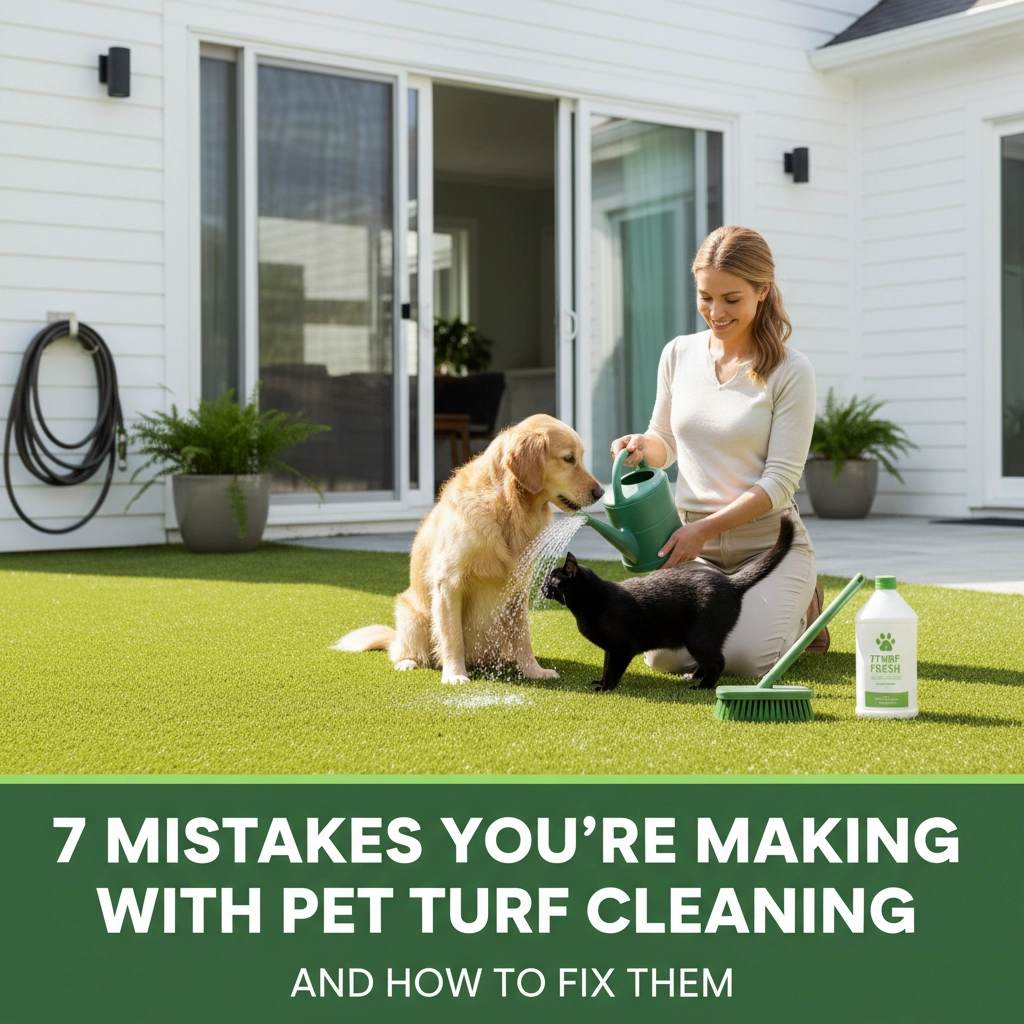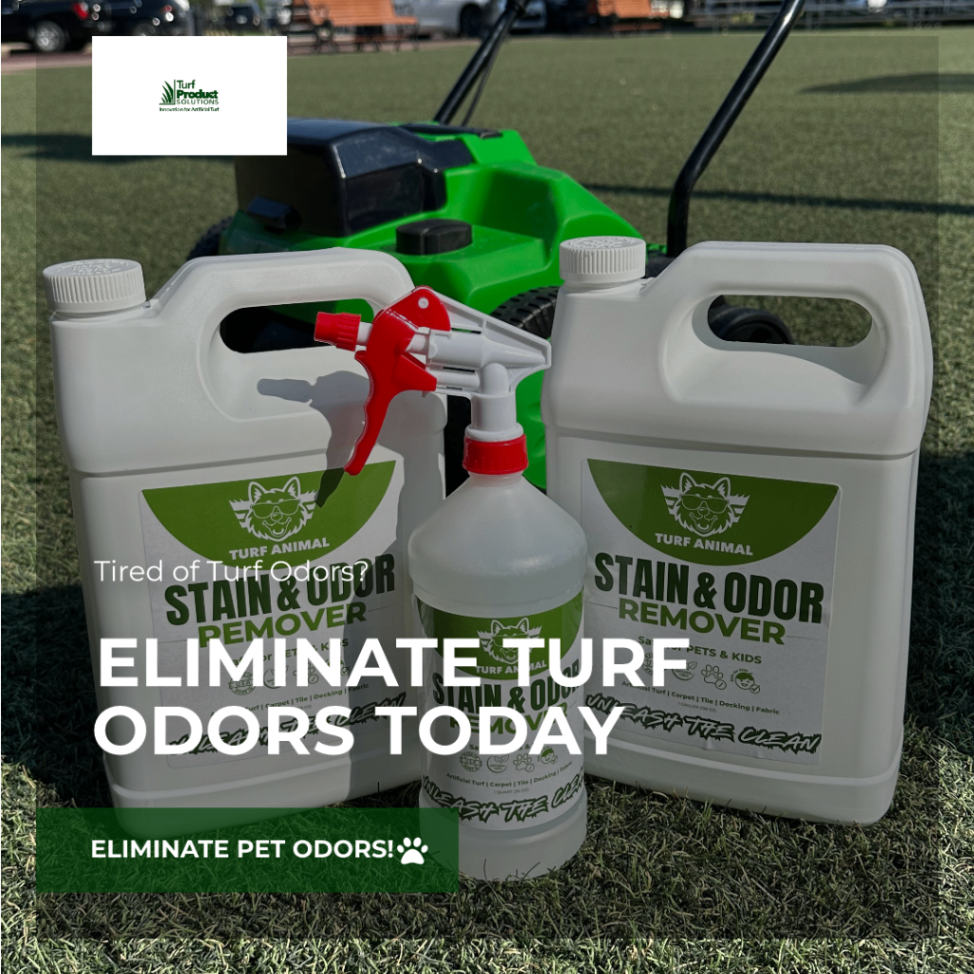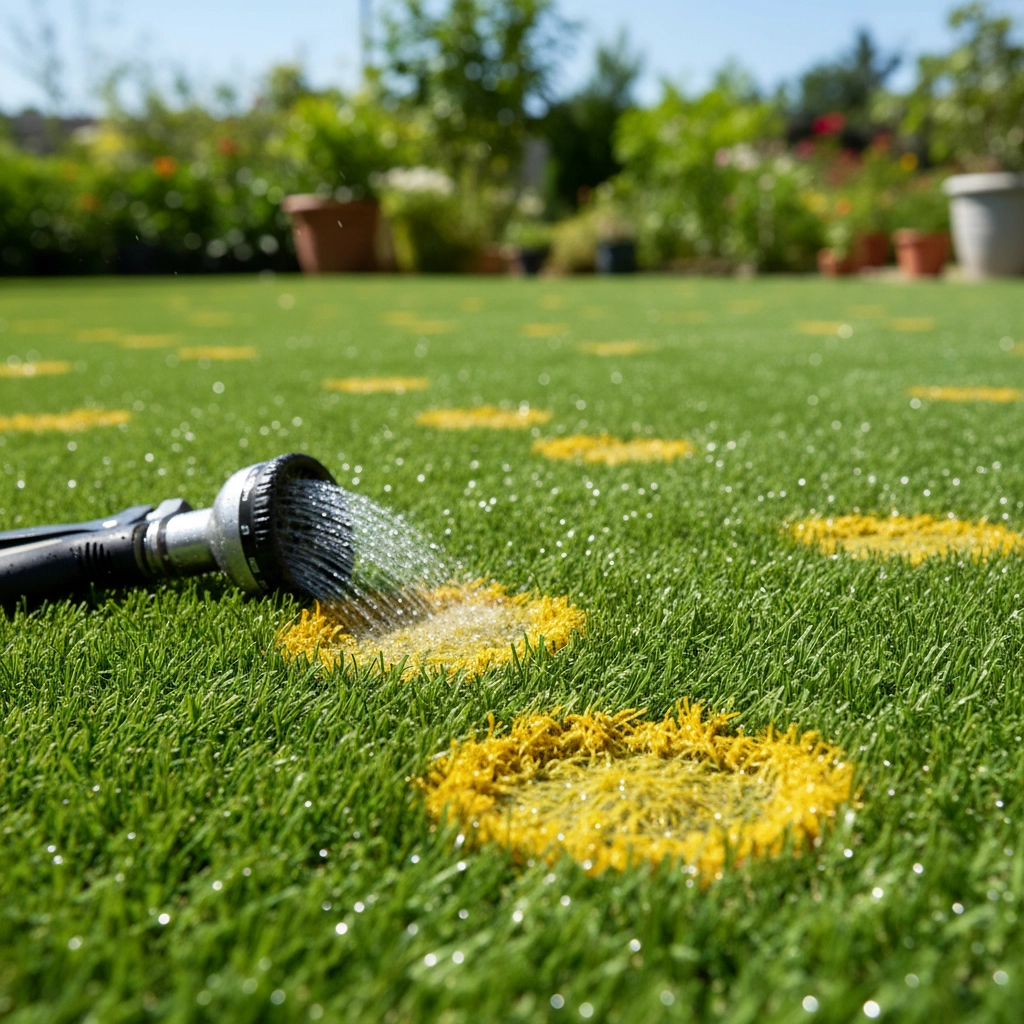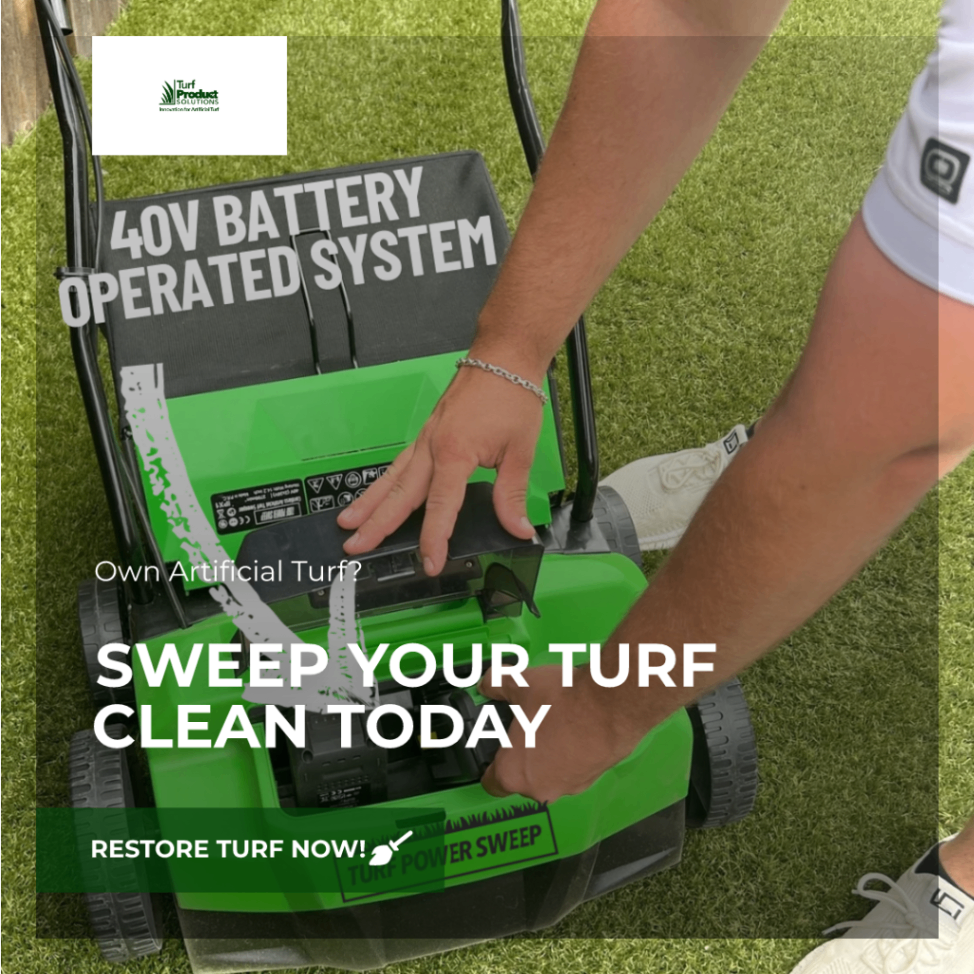7 Mistakes You're Making with Pet Turf Cleaning (and How to Fix Them)

Pet owners invest in artificial turf for low maintenance. Wrong assumption. Your synthetic grass still needs proper care, especially with pets using it daily. Skip the right cleaning methods and you'll face persistent odors, bacterial buildup, and premature turf replacement.
Most homeowners make predictable mistakes that damage their investment. Here are the seven biggest errors and exact fixes.
Mistake #1: Letting Solid Waste Sit
Solid waste removal seems obvious. Yet many pet owners wait hours or even days before cleanup. Dog waste hardens, spreads bacteria, and penetrates the infill layer where it creates permanent staining and odor issues.
Fix: Remove solid waste within 2-4 hours maximum. Daily inspection of pet areas prevents buildup. Use a standard pooper scooper, then rinse the area immediately with a garden hose.
For pet boarding facilities: Implement hourly waste checks during peak hours. Staff should carry cleanup supplies at all times.
Mistake #2: Only Rinsing with Water
Water alone removes surface debris. It doesn't eliminate bacteria or neutralize ammonia from pet urine. The result? Lingering odors that return within days, especially in warm weather.
Fix: Combine water rinsing with enzyme-based cleaners. Turf Animal breaks down organic waste and eliminates odor-causing bacteria. Apply after initial water rinse, let sit for 10-15 minutes, then rinse again.
Application schedule: Daily water rinse, enzyme cleaner 2-3 times weekly for high-traffic pet areas.

Mistake #3: Using Harsh Chemical Cleaners
Bleach, ammonia, and household disinfectants seem like powerful solutions. They damage turf fibers, strip color, and create toxic residues dangerous for pets and children. Warranty voided.
Fix: Stick to turf-specific cleaners only. Enzyme-based formulas like Turf Animal provide effective cleaning without fiber damage. For basic maintenance, mild dish soap and water works.
Avoid completely: Bleach, vinegar, ammonia, acidic cleaners, and abrasive chemicals.
Mistake #4: Using Wrong Cleaning Tools
Metal rakes scratch turf fibers. Stiff-bristle brooms flatten artificial grass. High-pressure washers dislodge infill and void warranties. Wrong tools cause irreversible damage.
Fix: Use soft-bristle brushes or specialized turf equipment. Turf Power Sweep provides battery-powered cleaning specifically designed for artificial grass. Its precision-engineered bristles lift debris without damaging fibers.
Monthly maintenance: Brush turf to redistribute infill and maintain blade position. Use leaf blowers on low settings only.

Mistake #5: Ignoring Concentrated Urine Spots
Dogs favor specific bathroom areas. These spots receive 10x more urine than surrounding areas, creating concentrated bacterial buildup and persistent ammonia odors that standard cleaning can't eliminate.
Fix: Identify pet bathroom zones and treat them differently. Rinse these areas daily, apply enzyme cleaners weekly, and perform deep cleaning monthly. Mark problem spots for consistent attention.
For boarding facilities: Install drainage systems in designated pet areas. Use commercial-grade enzyme treatments weekly.

Mistake #6: Skipping Regular Maintenance Schedule
Pet owners wait until odor problems appear before taking action. By this point, bacteria has penetrated deep into infill layers where surface cleaning can't reach. Recovery requires professional intervention.
Fix: Establish consistent cleaning routine:
- Daily: Remove solid waste, rinse pet areas
- Weekly: Apply enzyme cleaner to high-traffic zones
- Monthly: Deep brush entire turf area, redistribute infill
- Quarterly: Professional deep cleaning for problem areas
Track maintenance in calendar app. Set reminders for each task.
Mistake #7: Neglecting Professional Deep Cleaning
Home maintenance handles surface issues. Deep-seated bacteria, mineral deposits, and organic waste require professional extraction equipment. Annual professional service extends turf life and maintains warranty coverage.
Fix: Schedule professional turf cleaning annually minimum. High-pet-traffic areas need service every 6 months. Professional equipment flushes infill, sanitizes backing material, and removes buildup impossible to reach with home methods.
Budget $200-400 annually for professional service. Compare this to $3,000-8,000 turf replacement costs.

Essential Products for Proper Pet Turf Care
Primary Cleaner: Turf Animal Concentrate - Organic enzyme formula, pet-safe, eliminates odors at source level.
Maintenance Equipment: Turf Power Sweep - Battery-powered brush system, precision bristles, debris collection bag.
Bulk Options: 4-Pack Turf Animal Gallons for large properties or boarding facilities.
Pet Boarding Facility Considerations
Commercial pet facilities face amplified challenges. Multiple dogs, constant use, and health regulations require upgraded protocols:
- Implement hourly waste removal during business hours
- Use commercial enzyme cleaners designed for high-volume applications
- Install proper drainage systems in designated pet areas
- Schedule professional cleaning monthly rather than quarterly
- Train all staff on proper turf maintenance procedures
- Document cleaning schedules for health department compliance
Investment in proper equipment pays for itself through extended turf life and reduced replacement costs.
Results Timeline
Week 1: Odor reduction noticeable after implementing proper cleaning products
Week 2-3: Visual improvement in turf appearance and fiber position
Month 1: Elimination of persistent odor issues in problem areas
Month 3: Significant improvement in overall turf condition and drainage
Year 1: Extended turf life, maintained warranty coverage, avoided replacement costs
Cost Analysis
Proper maintenance costs: $150-300 annually Poor maintenance consequences: $3,000-8,000 turf replacement every 5-7 years instead of 12-15 years
Investment in correct products and procedures saves thousands long-term while maintaining healthy environment for pets and family.
Check current product availability and pricing at Turf Product Solutions.
Stop making these costly mistakes. Your turf, your pets, and your budget will benefit from proper care protocols starting today.

